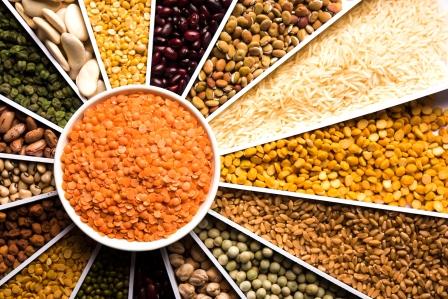India as we know is largely an agrarian economy with the agricultural sector providing employment to about 52 percent of the workforce and more than 54 percent of the land area is considered arable. Of the total commodity trading, agriculture contributes to nearly 12 percent, and non-agricultural goods like metal, crude, etc. contribute to the remaining (88%). We are also one of the world’s leading producers in production volume for various commodities such as rice, wheat, cotton, fruits & vegetables, and dairy.
So why and how is agri trading done in India?
The main purpose of having a proper agri trading process is to ensure fair prices to the producers, avoid price instabilities, and produce an accurate price discovery mechanism that benefits all.
Let us go back in time, like all over the world, trading in India too started with the barter system. Forward trading in animal, agricultural produce is believed to have existed in ancient India and references to such markets appear in Kautilya’s ‘Arthasastra’ written in the 3rd century BCE. With the introduction of money as a medium of exchange, there was a paradigm shift in the commodity trading system with the value of the commodity, and trading being conducted mainly using currency.
Next came agricultural spot markets/physical markets that evolved in many hamlets where transaction and delivery happened physically and the prices were determined by the process of demand and supply.
This spot system commonly known as Mandi left the farmer with no bargaining power as the price-setting power completely rested in the hands of the traders and middlemen. This led to a very inefficient price discovery mechanism.
Organized trading in commodity derivatives started in 1875 by the Bombay Cotton Trade Association Limited with cotton as the underlying commodity.
Later on, Gujarati Vyapari Mandali started trading in castor seed, groundnuts, and cotton. In 1919, Calcutta Hessian Exchange was started trading in raw jute and jute goods. Subsequently, many other commodity derivatives trading centers emerged across the country in places such as Hapur, Amritsar, Bhatinda, Rajkot, Jaipur, Delhi, etc.
The purpose behind the introduction of commodity exchange was to protect farmers from the risk of their crop value going lower than their input cost. An interesting example of this took place in 1943 when the Defence of India Act was passed to prohibit forward trading in some commodities. After Independence, the Parliament passed the Forward Contracts Regulation Act in 1952 to regulate the forward contracts in commodities across the country.
The Forward Contracts Regulation Act (FCRA) 1952 was repealed and regulation of the commodity derivatives market was shifted to the Securities and Exchange Board of India (SEBI) under Securities Contracts Regulation Act (SCRA) 1956 with effect from 28th September 2015. Currently, there are four commodity exchanges in the country – the NCDEX, MCX, ICEX, NSE, and BSE. Among these, NCDEX is mainly focusing on agricultural commodities.
In 2016, The Government of India has set up National Agriculture Market (eNAM), an electronic trading portal to connect existing APMC mandis, to create transparency among traders and to promote real time price discovery based on the supply-demand dynamics. eNAM is one of the most successful digital initiatives.
At present, a network of 585 mandis have integrated with e-NAM across 16 states and two Union Territories, with a user base of 1.66 crore farmers, 1.28 lakh traders and 70,934 commission agents. Moreover, 150 commodities, including food grains, oilseeds, fibers, vegetables and fruits, are traded on eNAM.
Currently developed derivative markets.
Commodities now have digital platforms for trade, allowing widespread distribution of physical products. NCDEX of the four major commodity stock exchanges in the country is focused on agricultural commodities.
Options are available in various commodities and even goods to reduce the risk of holding underlying assets in the future as well as in physical form.
There is a further sophistication in the commodity market, such as weather, power, and environmental derivatives.
Road Ahead
Contract farming by corporates and Farmer Producer Organisations (FPOs) has played a crucial role in developing the derivatives markets through various schemes and facilities available to such groups for hedging. Contract farming method adopted by corporates like ITC and Pepsi has helped farmers to get a good price for their produce. These corporates also provide them farm input support. More companies are likely to follow the same. Aggressive incorporation of innovative technologies into farming will transform the industry by helping to reduce the setbacks from adverse natural factors. Technologies such as CRISPR-Cas 9 help researchers to produce a large number of stress-resistant crop varieties. The sector is likely to embrace enhanced technologies like precision farming, blockchain, drones, IoT, Big data, and Machine learning analytics to improve farm productivity and trading.
On the heels of innovation, technology, and new policies, let’s hope the agriculture sector is poised for improved productivity and profitability.










